CS 111
Lecture 16 (5/29/12)
Abimael Arevalo
Media Faults
Disk-fails: solvable via logging
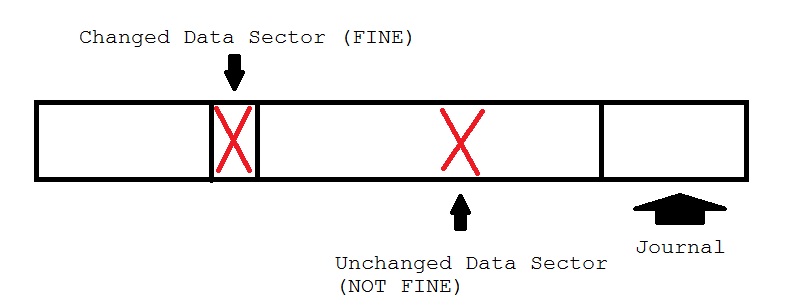
If an unchanged sector fails, the data cannot be reconstructed using the journal.
RAID (Redundant Array of Independent Disks)
-
Simulate a large drive with a lot of little drives.
-
Save money and gain reliability.
RAID levels a la Berkeley
-
RAID 0: no redundancy, just a simulated big disk.
-
Concatenation: performance of the virtual disk is roughly that of a physical disk.
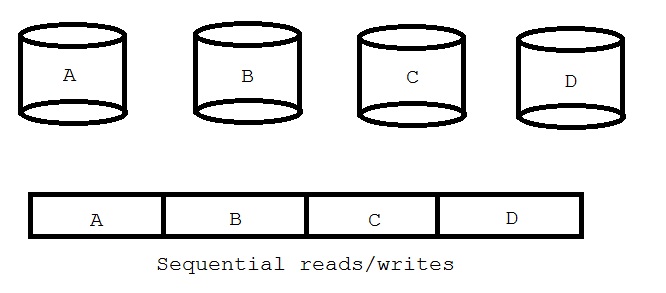
-
Striping: Divide A, B, C, and D into pieces and places the pieces into the drives. Each drive can be run in parallel to extract the data. Virtual disk performance is roughly four times faster than a physical disk.
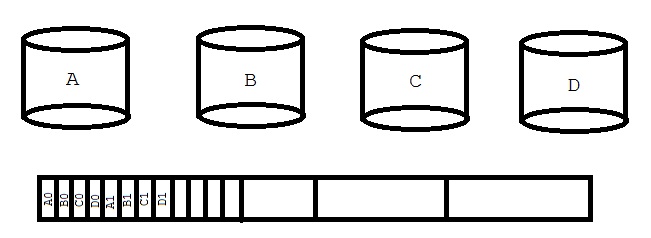
-
Growing is easier in concatenation than in striping.
-
RAID 1: Mirroring
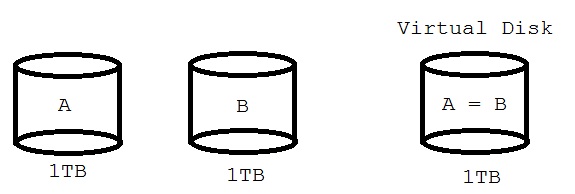
-
Write to both drives.
-
Read from either (can pick the closest disk head).
ASSUMPTION: reads can detect faults.
-
RAID 2,3,4,5,6,7,...
-
RAID 4
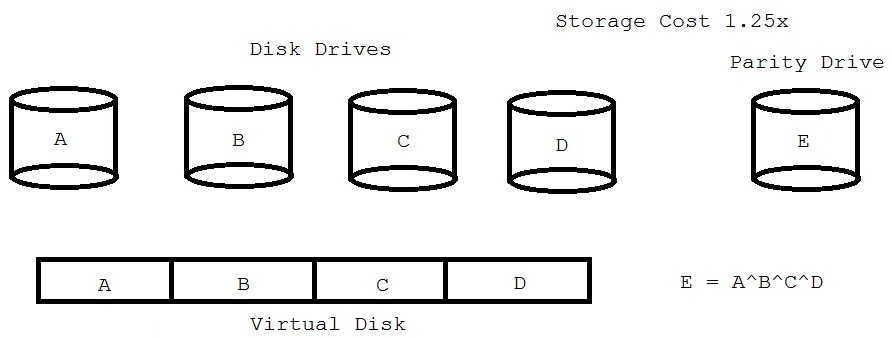
-
Reads are like RAID 0 concatenation and has worse read performance than RAID 0 striping.
-
Writes are like RAID 1 (need to read drive E before writing).
-
If C fails: C = A^B^E^D ('^' = XOR)
Disk Drive Reliability
-
Mean time to failure is (typically) 300,000 hours (34 years), but in reality, drives get replaced every 5 years.
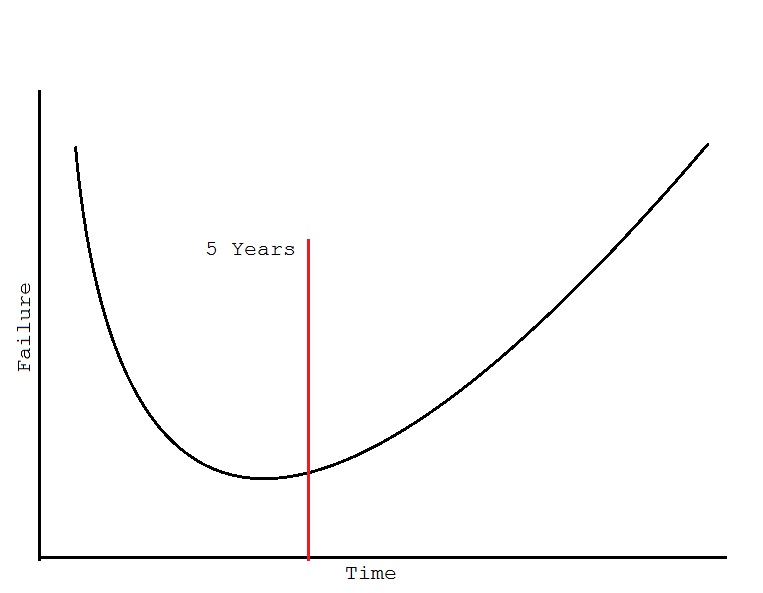
-
Probability distribution function for single disk failure.
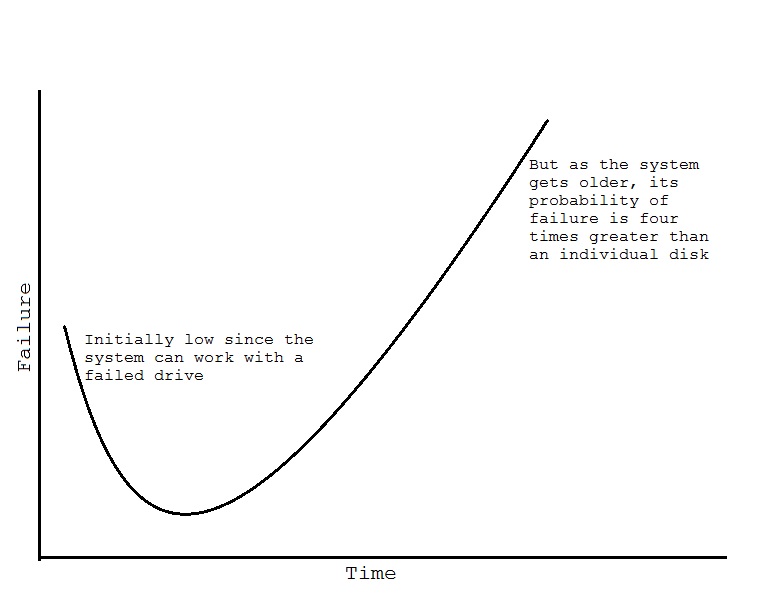
-
Probability distribution function for RAID 4 (never replace drives).
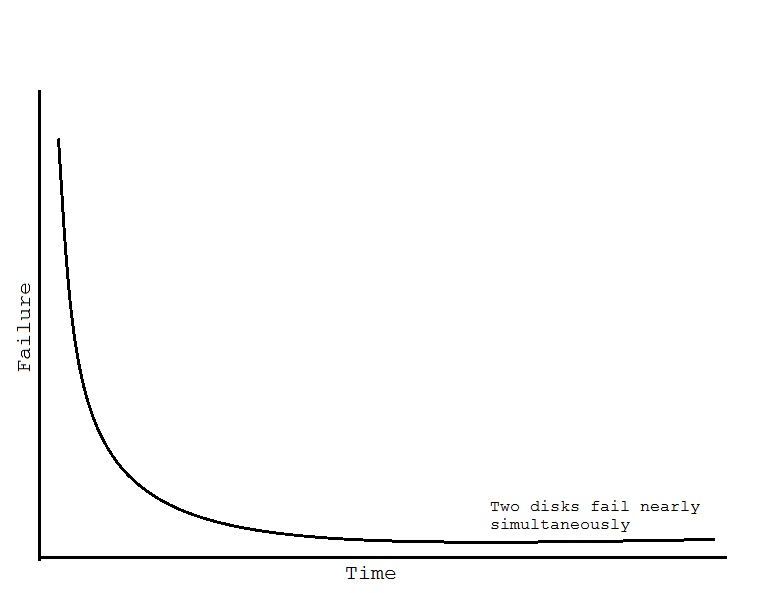
-
Probability distribution function for RAID 4 (assuming failed disks are replaced).
-
Disk fails.
-
(60 minutes later) operator replaces it.
-
(8 hours later) rebuilding phase. Depends on drive size.
-
RAID schemes can be nested.
-
Q: Does RAID make backups obsolete?
A: No, we still need backups for user errors.
Distributed Systems
RPC (Remote Procedure Calls) vs. System Calls and Function Calls
-
Caller sees:
x = fft (buf, n);
Implementation:
send (buf, n); // to server
// Wait for response
return;
-
Caller and callee do not share address space. There is no call by reference (at least, not efficiently).
-
Caller and callee may be different architectures (ARM vs. SPARC or little vs. big endian).
Requires conversion:
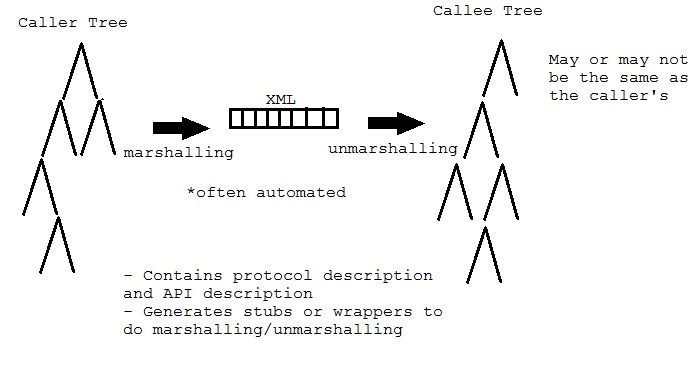
RPC has different failure modes
-
PRO: Callee cannot trash caller's memory and vice versa (hard modularity).
-
CON: Messages get lost.
-
CON: Messages get corrupted.
-
CON: Messages get duplicated.
-
CON: The network can go down or be slow.
-
CON: The server can go down or be slow.
What should a stub/wrapper do:
-
If corruption - resend
-
If no response - possibilities are:
-
Keep trying - at least once RPC (suitable for idempotent operations).
-
Give up, return error - at most once RPC (suitable for transactional operations).
-
Exactly once RPC (Holy Grail of RPC).
RPC examples:
-
HTTP client -> "GET /foo/bar.html HTTP\r\n"
Server reponse -> "HTTP /1.1 200 OK\r\n"
-
SOAP (Simple Access Object Protocol)
-
X - Remote screen display

-
Works even if they are in the same machine.
-
Use of higher level primitives (e.g. fillRectangle).
Perfomance Issues with RPC
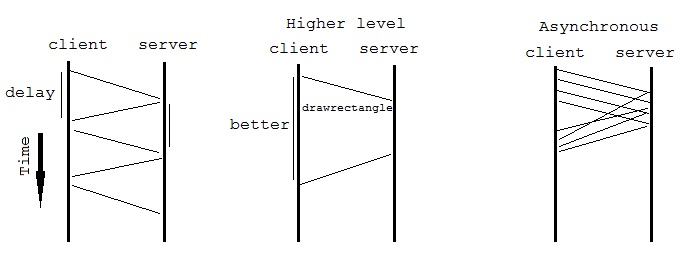
Solutions:
-
Have higher level primitives.
-
Asynchronous RPC - better performance but can complicate caller
-
Cache in caller (for simple stuff)
NFS (Network File System): File system built atop HTTP
The NFS protocol is like the UNIX file system but on wheels.
-
LOOKUP (dirfh, name) // Request fh and attributes (size, owner, etc.)
fh = file handle, a unique id for a file within a file system
-
CREATE (dirfh, name, attr) // Returns file handle and attributes
-
REMOVE (dirfh, name) // Returns status
-
READ (fh, size, offset) // Returns data
-
WRITE (fh, size, offset, data) // Returns status
We want our NFS to be reliable even if the file server reboots.
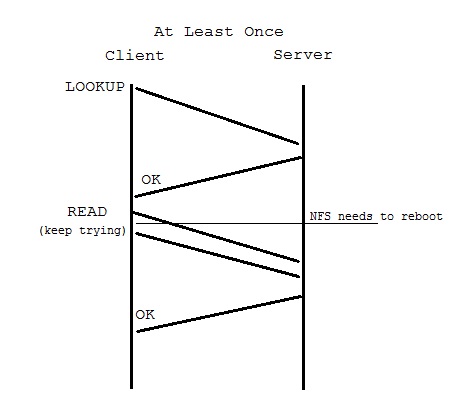
"Stateless Server
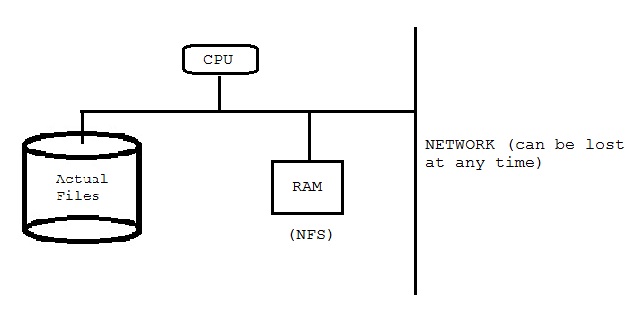
-
Whenever the client does a write, it has to wait for a response before continuing.
-
NFS server cant' respond to a write request until data hits disk.
-
NFS will be slow for writes because it forces writes to be synchronous.
-
To fix this problem we "cheat":
-
Use flash on the server to store pending write requests.
-
Writes don't really wait for the server to respond, if a write fails, a later "close" will fail.
Can use "fsync" (written all data) and "fdatasync" (written all data to disk) to make sure data is written. But these operations slow performance.
-
In general, most clients won't see a consistent state.
-
NFS by design doesn't have read/write consistency (for performance reasons).
-
It does have open/close consistency through fsync and fdatasync.
|












